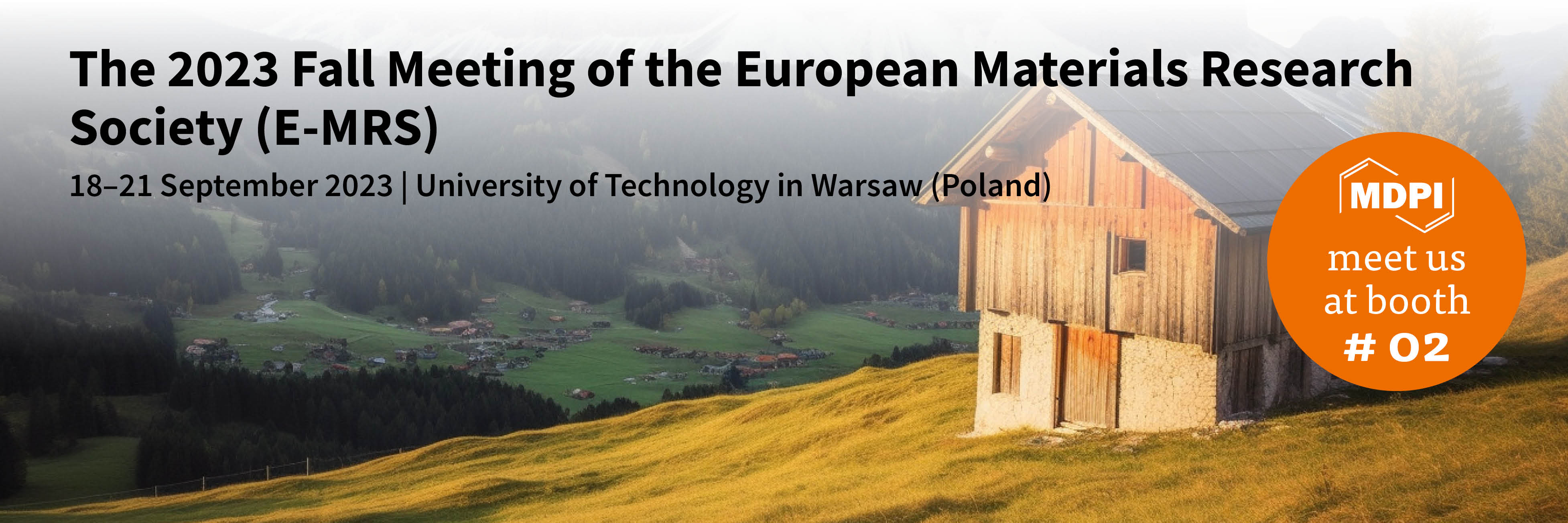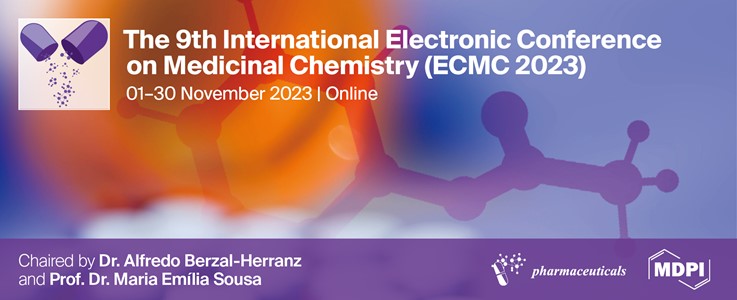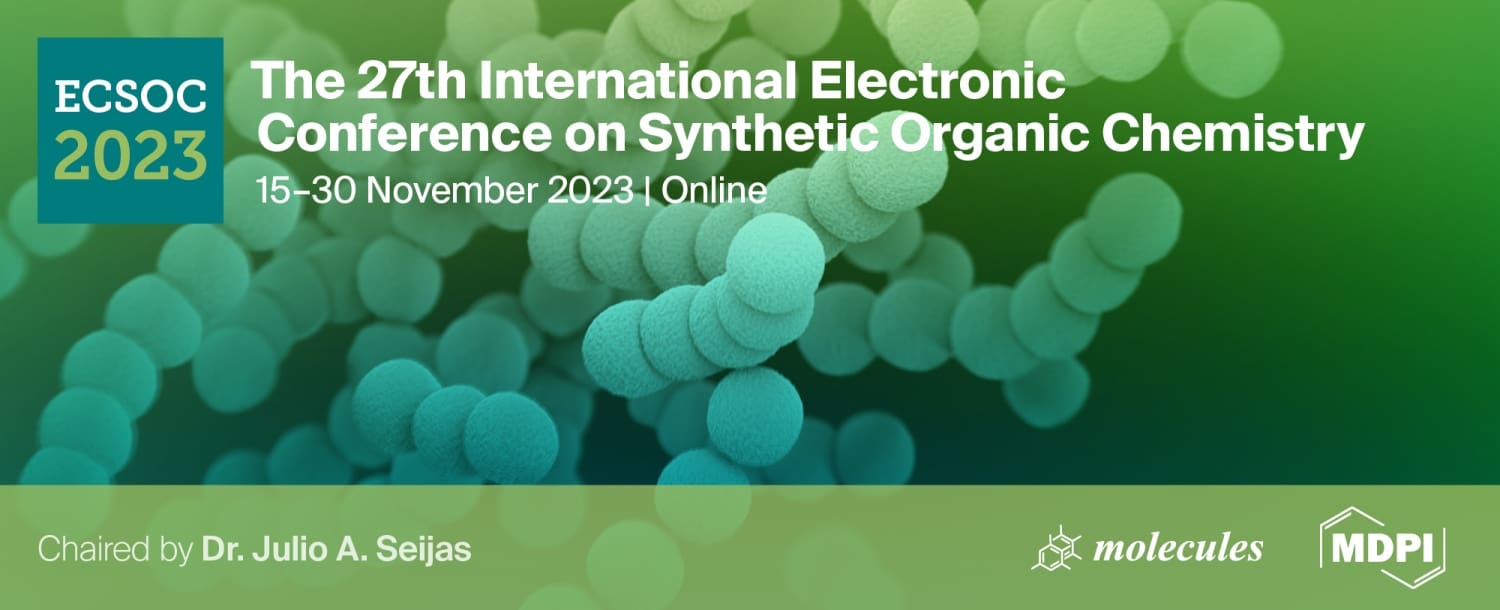-
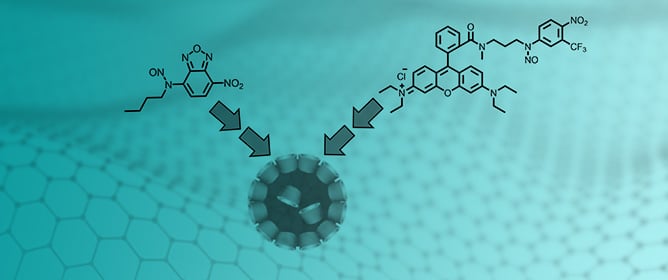 Supramolecular Assemblies of Fluorescent Nitric Oxide Photoreleasers with Ultrasmall Cyclodextrin Nanogels
Supramolecular Assemblies of Fluorescent Nitric Oxide Photoreleasers with Ultrasmall Cyclodextrin Nanogels -
 Syntheses, Structures, and Corrosion Inhibition of Various Alkali Metal Carboxylate Complexes
Syntheses, Structures, and Corrosion Inhibition of Various Alkali Metal Carboxylate Complexes -
 Mononuclear Ni(II) Complexes Exhibiting Field-Induced SIM Behavior
Mononuclear Ni(II) Complexes Exhibiting Field-Induced SIM Behavior -
![Organic–Inorganic Hybrids Based on Copper Thiocyanate Templated by 1,4-Diazabicyclo[2.2.2]octane](https://pub.mdpi-res.com/title_story/title_story_16891454689626.jpg?1693551999) Organic–Inorganic Hybrids Based on Copper Thiocyanate Templated by 1,4-Diazabicyclo[2.2.2]octane
Organic–Inorganic Hybrids Based on Copper Thiocyanate Templated by 1,4-Diazabicyclo[2.2.2]octane -
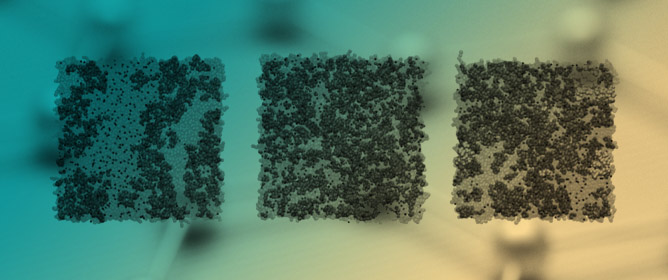 Anionic Lipid Nanodomains Regulate Aggregation of hIAPP on Cell Membranes Leading to the Progression of Amyloid Diseases
Anionic Lipid Nanodomains Regulate Aggregation of hIAPP on Cell Membranes Leading to the Progression of Amyloid Diseases
Journal Description
Molecules
Molecules
is the leading international, peer-reviewed, open access journal of chemistry. Molecules is published semimonthly online by MDPI. The International Society of Nucleosides, Nucleotides & Nucleic Acids (IS3NA), the Spanish Society of Medicinal Chemistry (SEQT) and the International Society of Heterocyclic Chemistry (ISHC) are affiliated with Molecules and their members receive a discount on the article processing charges.
- Open Access— free for readers, with article processing charges (APC) paid by authors or their institutions.
- High Visibility: indexed within Scopus, SCIE (Web of Science), PubMed, MEDLINE, PMC, Reaxys, Embase, CaPlus / SciFinder, MarinLit, AGRIS, and other databases.
- Journal Rank: JCR - Q2 (Chemistry, Multidisciplinary) / CiteScore - Q1 (Chemistry (miscellaneous))
- Rapid Publication: manuscripts are peer-reviewed and a first decision is provided to authors approximately 13.6 days after submission; acceptance to publication is undertaken in 2.8 days (median values for papers published in this journal in the first half of 2023).
- Recognition of Reviewers: reviewers who provide timely, thorough peer-review reports receive vouchers entitling them to a discount on the APC of their next publication in any MDPI journal, in appreciation of the work done.
- Sections: published in 26 topical sections.
- Testimonials: See what our editors and authors say about Molecules.
- Companion journals for Molecules include: Foundations and Photochem.
Impact Factor:
4.6 (2022);
5-Year Impact Factor:
4.9 (2022)
Latest Articles
Modulating the Luminescence, Photosensitizing Properties, and Mitochondria-Targeting Ability of D-π-A-Structured Dihydrodibenzo[a,c]phenazines
Molecules 2023, 28(17), 6392; https://doi.org/10.3390/molecules28176392 (registering DOI) - 01 Sep 2023
Abstract
Herein, pyridinium and 4-vinylpyridinium groups are introduced into the VIE-active N,N′-disubstituted-dihydrodibenzo[a,c]phenazines (DPAC) framework to afford a series of D-π-A-structured dihydrodibenzo[a,c]phenazines in consideration of the aggregation-benefited performance of the DPAC module and the
[...] Read more.
Herein, pyridinium and 4-vinylpyridinium groups are introduced into the VIE-active N,N′-disubstituted-dihydrodibenzo[a,c]phenazines (DPAC) framework to afford a series of D-π-A-structured dihydrodibenzo[a,c]phenazines in consideration of the aggregation-benefited performance of the DPAC module and the potential mitochondria-targeting capability of the resultant pyridinium-decorated DPACs (DPAC-PyPF6 and DPAC-D-PyPF6). To modulate the properties and elucidate the structure–property relationship, the corresponding pyridinyl/4-vinylpyridinyl-substituted DPACs, i.e., DPAC-Py and DPAC-D-Py, are designed and studied as controls. It is found that the strong intramolecular charge transfer (ICT) effect enables the effective separation of the highest occupied molecular orbital (HOMO) and the lowest unoccupied molecular orbital (LUMO) of DPAC-PyPF6 and DPAC-D-PyPF6, which is conducive to the generation of ROS. By adjusting the electron-accepting group and the π-bridge, the excitation, absorption, luminescence, photosensitizing properties as well as the mitochondria-targeting ability can be finely tuned. Both DPAC-PyPF6 and DPAC-D-PyPF6 display large Stokes shifts (70–222 nm), solvent-dependent absorptions and emissions, aggregation-induced emission (AIE), red fluorescence in the aggregated state (λem = 600–650 nm), aggregation-promoted photosensitizing ability with the relative singlet-oxygen quantum yields higher than 1.10, and a mitochondria-targeting ability with the Pearson coefficients larger than 0.85. DPAC-D-PyPF6 shows absorption maximum at a longer wavelength, slightly redder fluorescence and better photosensitivity as compared to DPAC-PyPF6, which consequently leads to the higher photocytotoxicity under the irradiation of white light as a result of the larger π-conjugation.
Full article
(This article belongs to the Special Issue Aggregation-Induced Emission: From Fundamental to Application)
►
Show Figures
Open AccessArticle
Knotwood and Branchwood Polyphenolic Extractives of Silver Fir, Spruce and Douglas Fir and Their Antioxidant, Antifungal and Antibacterial Properties
by
, , , , , and
Molecules 2023, 28(17), 6391; https://doi.org/10.3390/molecules28176391 (registering DOI) - 01 Sep 2023
Abstract
The extractive contents of three softwood species largely used in the wood industry, namely Abies alba (Silver fir), Picea abies (spruce) and Pseudotsuga menziesii (Douglas fir), have been determined quantitatively for knots and at different points chosen along their branches, before analysis using
[...] Read more.
The extractive contents of three softwood species largely used in the wood industry, namely Abies alba (Silver fir), Picea abies (spruce) and Pseudotsuga menziesii (Douglas fir), have been determined quantitatively for knots and at different points chosen along their branches, before analysis using high-performance liquid chromatography coupled with Mass Spectrometry (HPLC-MS). The results indicated that branchwood samples located in close proximity to the stem present high contents of extractives similar to those recorded for the knots. HPLC analysis showed quite similar chemical compositions, indicating that first cm of the branches could be considered as an additional source of knotwood. The antibacterial, antifungal and antioxidant activities of knot’s extractives have been investigated with the dual objective of better understanding the role of high levels of secondary metabolites present in the knot and evaluating their potential for biorefinery applications. The antioxidant activity study showed that crude extracts of Douglas fir knotwood presented higher radical scavenging activity levels than the extracts of Silver fir and spruce, which presented more or less the same activities. Silver fir and spruce knotwood extracts presented higher antibacterial activity levels than the Douglas fir knotwood extracts did, while Douglas fir knotwood extracts presented more fungal growth inhibition than the spruce and fir knotwood extracts did. The structure–activity relationships indicate that radical scavenging and antifungal activities are associated with a higher relative quantity of flavonoids in the crude extracts, while higher relative quantities of lignans are associated with antibacterial activity.
Full article
(This article belongs to the Special Issue Phytochemicals: Extraction, Bioactivities and Applications)
►▼
Show Figures
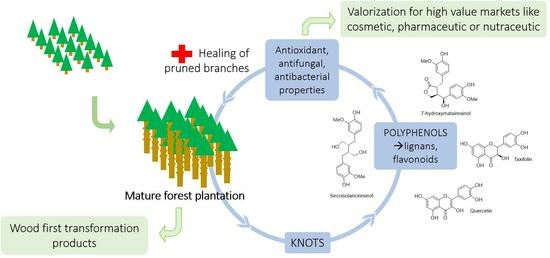
Graphical abstract
Open AccessReview
Towards Valorization of Food-Waste-Derived Pectin: Recent Advances on Their Characterization and Application
Molecules 2023, 28(17), 6390; https://doi.org/10.3390/molecules28176390 (registering DOI) - 01 Sep 2023
Abstract
Pectin, a natural biopolymer, can be extracted from food waste biomass, adding value to raw materials. Currently, commercial pectin is mostly extracted from citrus peels (85.5%) and apple pomace (14.0%), with a small segment from sugar beet pulp (0.5%). However, driven by high
[...] Read more.
Pectin, a natural biopolymer, can be extracted from food waste biomass, adding value to raw materials. Currently, commercial pectin is mostly extracted from citrus peels (85.5%) and apple pomace (14.0%), with a small segment from sugar beet pulp (0.5%). However, driven by high market demand (expected to reach 2.12 billion by 2030), alternative agro-industrial waste is gaining attention as potential pectin sources. This review summarizes the recent advances in characterizing pectin from both conventional and emerging food waste sources. The focus is the chemical properties that affect their applications, such as the degree of esterification, the neutral sugars’ composition, the molecular weight, the galacturonic acid content, and technological–functional properties. The review also highlights recent updates in nutraceutical and food applications, considering the potential use of pectin as an encapsulating agent for intestinal targeting, a sustainable biopolymer for food packaging, and a functional and emulsifying agent in low-calorie products. It is clear from the considered literature that further studies are needed concerning the complexity of the pectin structure extracted from emerging food waste raw materials, in order to elucidate their most suitable commercial application.
Full article
(This article belongs to the Special Issue Featured Review Papers in Food Chemistry)
►▼
Show Figures
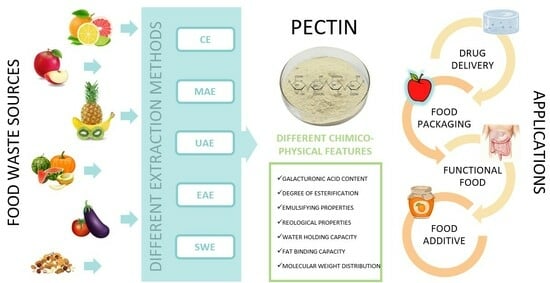
Graphical abstract
Open AccessArticle
Phenolic Profiles, Antihyperglycemic, Anti-Diabetic, and Antioxidant Properties of Egyptian Sonchus oleraceus Leaves Extract: An In Vivo Study
Molecules 2023, 28(17), 6389; https://doi.org/10.3390/molecules28176389 (registering DOI) - 01 Sep 2023
Abstract
This study aimed to investigate the phenolic and antioxidant properties of Egyptian Sonchus oleraceus leaves extract (SOE) while comparing the antihyperglycemic efficacy of SOE with that of conventional medicines (glibenclamide) in vivo as a substitution for insulin-deficient patients. Total phenolic (TPC) and flavonoid
[...] Read more.
This study aimed to investigate the phenolic and antioxidant properties of Egyptian Sonchus oleraceus leaves extract (SOE) while comparing the antihyperglycemic efficacy of SOE with that of conventional medicines (glibenclamide) in vivo as a substitution for insulin-deficient patients. Total phenolic (TPC) and flavonoid contents (TFC) in SOE contributed around 127.66 ± 0.56 mg GAE/gm as gallic acid equivalent (GAE) and 74.80 ± 0.55 mg QE/gm as quercetin equivalent (QE). SOE also showed significant DPPH scavenging activity at 43.46%. The presence of five phenolic and six flavonoid compounds in SOE was discovered by HPLC analysis. For the in vivo assay, 42 rats were distributed into six groups (7 Wister albino rats each). The standard control group was fed a basal diet. While the 35 rats were induced with a single dose of 100 mg kg−1 body weight (b.w.) alloxan, then treated orally with glibenclamide (GLI) at 10 mg kg−1, 100, 200, and 300 mg kg−1 SOE (positive control group) for 56 days of routine gastric oral gavages and compared to the effects of GLI, the treatment of SOE 200 and 300 mg kg−1 in diabetic rats for two months dramatically decreased blood glucose, total lipid, total cholesterol, and low-density lipoprotein cholesterol (LDLC) while boosting high-density lipoprotein cholesterol (HDLC) levels and improving liver and kidney functions. The histological assay revealed that the SOE 300 mg kg−1 treatment significantly improved the pancreas tissues, implying the potential application of Egyptian SOE as a diabetes treatment.
Full article
(This article belongs to the Special Issue Phytochemicals: Extraction, Bioactivities and Applications)
►▼
Show Figures
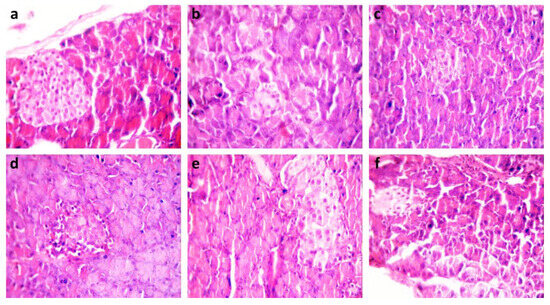
Figure 1
Open AccessArticle
Mass Spectrometric Fingerprint Mapping Reveals Species-Specific Differences in Plant Polyphenols and Related Bioactivities
Molecules 2023, 28(17), 6388; https://doi.org/10.3390/molecules28176388 (registering DOI) - 31 Aug 2023
Abstract
Plant species show large variation in the composition and content of their tannins and other polyphenols. These large metabolites are not easy to measure accurately, but they are important factors for species bioactivity and chemotaxonomy. Here, we used an automated group-specific UHPLC-DAD-MS/MS tool
[...] Read more.
Plant species show large variation in the composition and content of their tannins and other polyphenols. These large metabolites are not easy to measure accurately, but they are important factors for species bioactivity and chemotaxonomy. Here, we used an automated group-specific UHPLC-DAD-MS/MS tool to detect and quantify eight most common polyphenol groups in 31 chemically diverse plant species representing many types of growth forms and evolutionary ages. Ten replicate plants were used for each species and two polyphenol-related bioactivities, i.e., protein precipitation capacity and oxidative activity were measured in all samples as well. By the help of a novel 2D fingerprint mapping tool we were able to visualize the qualitative and quantitative differences between the species in hydrolysable tannins (galloyl and hexahydroxydiphenoyl derivatives), proanthocyanidins (procyanidins and prodelphinidins), flavonols (kaempferol, quercetin and myricetin derivatives) and quinic acid derivatives together with the two bioactivities. The highest oxidative activities were found with species containing ellagitannins (e.g., Quercus robur, Geranium sylvaticum, Lythrum salicaria and Chamaenerion angustifolium) or prodelphinidin-rich proanthocyanidins (e.g., Ribes alpinum, Salix phylicifolia and Lysimachia vulgaris). The best species with high protein precipitation capacity were rich in gallotannins (Acer platanoides and Paeonia lactiflora) or oligomeric ellagitannins (e.g., Comarum palustre, Lythrum salicaria and Chamaenerion angustifolium). These types of tools could prove their use in many types of screening experiments and might reveal even unusually active polyphenol types directly from the crude plant extracts.
Full article
(This article belongs to the Special Issue Research of Phenolic Compounds from Natural Source)
►▼
Show Figures
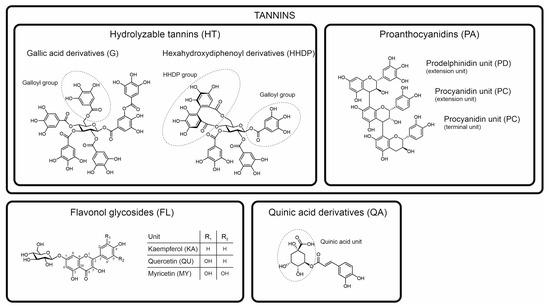
Figure 1
Open AccessArticle
Biosorption of Pb(II) Using Natural and Treated Ardisia compressa K. Leaves: Simulation Framework Extended through the Application of Artificial Neural Network and Genetic Algorithm
by
, , , , , , and
Molecules 2023, 28(17), 6387; https://doi.org/10.3390/molecules28176387 (registering DOI) - 31 Aug 2023
Abstract
This study explored the effects of solution pH, biosorbent dose, contact time, and temperature on the Pb(II) biosorption process of natural and chemically treated leaves of A. compressa K. (Raw-AC and AC-OH, respectively). The results show that the surface characteristics of Raw-AC changed
[...] Read more.
This study explored the effects of solution pH, biosorbent dose, contact time, and temperature on the Pb(II) biosorption process of natural and chemically treated leaves of A. compressa K. (Raw-AC and AC-OH, respectively). The results show that the surface characteristics of Raw-AC changed following alkali treatment. FT-IR analysis showed the presence of various functional groups on the surface of the biosorbent, which were binding sites for the Pb(II) biosorption. The nonlinear pseudo-second-order kinetic model was found to be the best fitted to the experimental kinetic data. Adsorption equilibrium data at pH = 2–6, biosorbents dose from 5 to 20 mg/L, and temperature from 300.15 to 333.15 K were adjusted to the Langmuir, Freundlich, and Dubinin–Radushkevich (D-R) isotherm models. The results show that the adsorption capacity was enhanced with the increase in the solution pH and diminished with the increase in the temperature and biosorbent dose. It was also found that AC-OH is more effective than Raw-AC in removing Pb(II) from aqueous solutions. This was also confirmed using artificial neural networks and genetic algorithms, where it was demonstrated that the improvement was around 57.7%. The nonlinear Langmuir isotherm model was the best fitted, and the maximum adsorption capacities of Raw-AC and AC-OH were 96 mg/g and 170 mg/g, respectively. The removal efficiency of Pb(II) was maintained approximately after three adsorption and desorption cycles using 0.5 M HCl as an eluent. This research delved into the impact of solution pH, biosorbent characteristics, and operational parameters on Pb(II) biosorption, offering valuable insights for engineering education by illustrating the practical application of fundamental chemical and kinetic principles to enhance the design and optimization of sustainable water treatment systems.
Full article
(This article belongs to the Special Issue Efficient Chemical Technologies and Adsorbents for Environmental Pollution Removal and Wastes Recycling II)
►▼
Show Figures
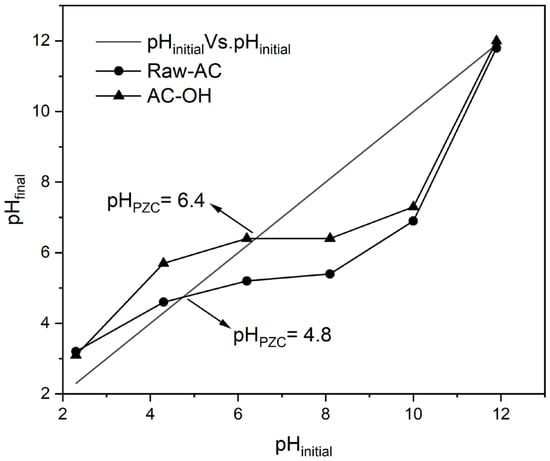
Figure 1
Open AccessArticle
Glycosylation Contributes to Thermostability and Proteolytic Resistance of rFIP-nha (Nectria haematococca)
by
, , , , , , , , , and
Molecules 2023, 28(17), 6386; https://doi.org/10.3390/molecules28176386 (registering DOI) - 31 Aug 2023
Abstract
Glycosylation is an important post-translational modification of proteins, contributing to protein function, stability and subcellular localization. Fungal immunomodulatory proteins (FIPs) are a group of small proteins with notable immunomodulatory activity, some of which are glycoproteins. In this study, the impact of glycosylation on
[...] Read more.
Glycosylation is an important post-translational modification of proteins, contributing to protein function, stability and subcellular localization. Fungal immunomodulatory proteins (FIPs) are a group of small proteins with notable immunomodulatory activity, some of which are glycoproteins. In this study, the impact of glycosylation on the bioactivity and biochemical characteristics of FIP-nha (from Nectria haematococca) is described. Three rFIP-nha glycan mutants (N5A, N39A, N5+39A) were constructed and expressed in Pichia pastoris to study the functionality of the specific N-glycosylation on amino acid N5 and N39. Their protein characteristics, structure, stability and activity were tested. WT and mutants all formed tetramers, with no obvious difference in crystal structures. Their melting temperatures were 82.2 °C (WT), 81.4 °C (N5A), 80.7 °C (N39A) and 80.1 °C (N5+39A), indicating that glycosylation improves thermostability of rFIP-nha. Digestion assays showed that glycosylation on either site improved pepsin resistance, while 39N-glycosylation was important for trypsin resistance. Based on the 3D structure and analysis of enzyme cleavage sites, we conclude that glycosylation might interfere with hydrolysis via increasing steric hindrance. WT and mutants exerted similar bioactivity on tumor cell metabolism and red blood cells hemagglutination. Taken together, these findings indicate that glycosylation of FIP-nha impacts its thermostability and digestion resistance.
Full article
(This article belongs to the Special Issue Protein Structure, Function and Interaction)
►▼
Show Figures
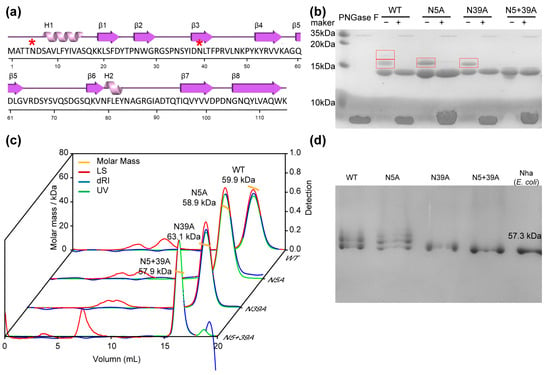
Figure 1
Open AccessReview
Comparsion of Catalyst Effectiveness in Different Chemical Depolymerization Methods of Poly(Ethylene Terephthalate)
Molecules 2023, 28(17), 6385; https://doi.org/10.3390/molecules28176385 (registering DOI) - 31 Aug 2023
Abstract
This paper presents an overview of the chemical recycling methods of polyethylene terephthalate (PET) described in the scientific literature in recent years. The review focused on methods of chemical recycling of PET including hydrolysis and broadly understood alcoholysis of polymer ester bonds including
[...] Read more.
This paper presents an overview of the chemical recycling methods of polyethylene terephthalate (PET) described in the scientific literature in recent years. The review focused on methods of chemical recycling of PET including hydrolysis and broadly understood alcoholysis of polymer ester bonds including methanolysis, ethanolysis, glycolysis and reactions with higher alcohols. The depolymerization methods used in the literature are described, with particular emphasis on the use of homogeneous and heterogeneous catalysts and ionic liquids, as well as auxiliary substances such as solvents and cosolvents. Important process parameters such as temperature, reaction time, and pressure are compared. Detailed experimental results are presented focusing on reaction yields to allow for easy comparison of applied catalysts and for determination of the most favorable reaction conditions and methods.
Full article
(This article belongs to the Special Issue Catalysis for Green Chemistry)
►▼
Show Figures
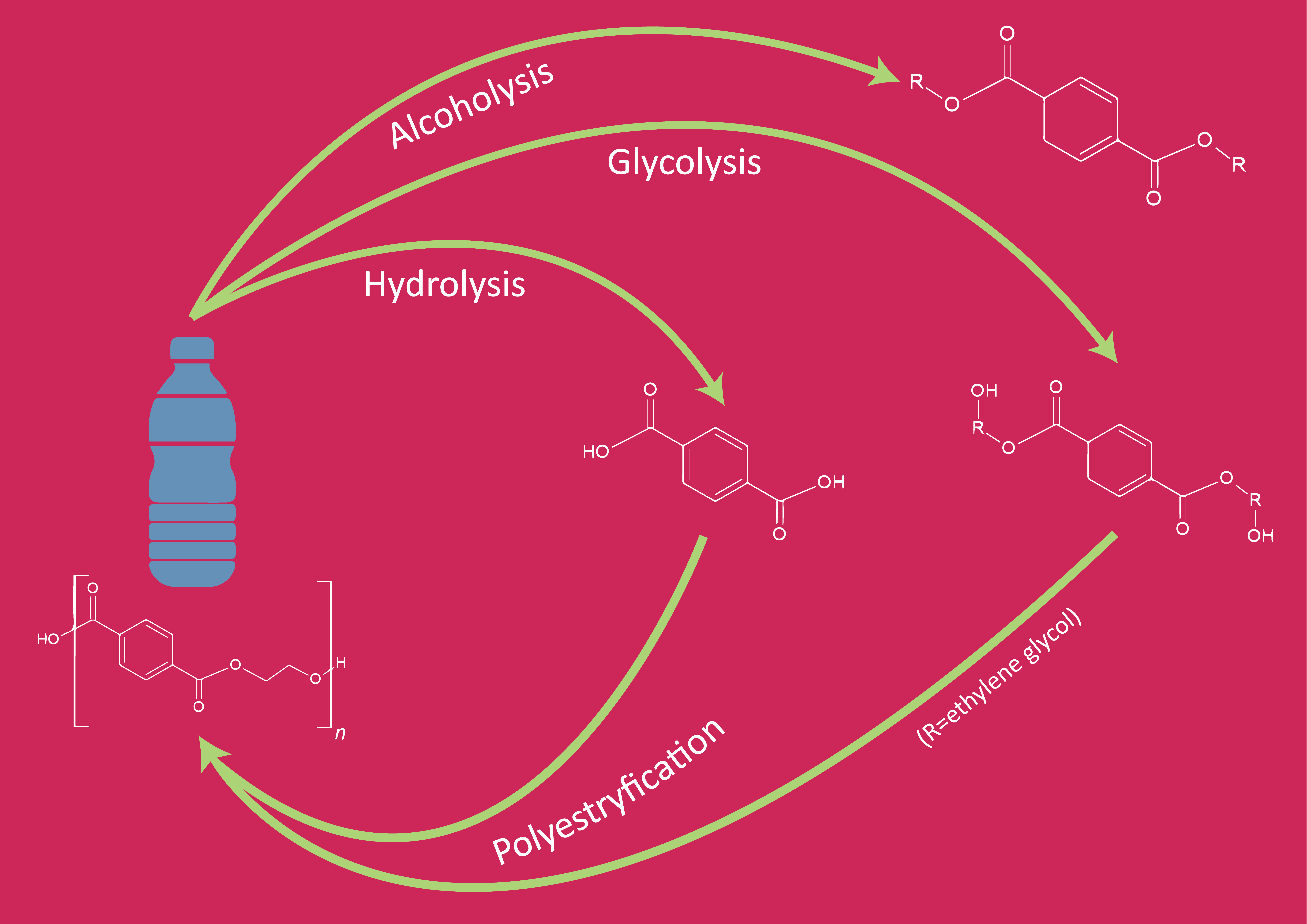
Graphical abstract
Open AccessArticle
Reduction of Hydrogen Peroxide by Human Mitochondrial Amidoxime Reducing Component Enzymes
by
, , , , , , and
Molecules 2023, 28(17), 6384; https://doi.org/10.3390/molecules28176384 (registering DOI) - 31 Aug 2023
Abstract
The mitochondrial amidoxime reducing component (mARC) is a human molybdoenzyme known to catalyze the reduction of various N-oxygenated substrates. The physiological function of mARC enzymes, however, remains unknown. In this study, we examine the reduction of hydrogen peroxide (H2O2
[...] Read more.
The mitochondrial amidoxime reducing component (mARC) is a human molybdoenzyme known to catalyze the reduction of various N-oxygenated substrates. The physiological function of mARC enzymes, however, remains unknown. In this study, we examine the reduction of hydrogen peroxide (H2O2) by the human mARC1 and mARC2 enzymes. Furthermore, we demonstrate an increased sensitivity toward H2O2 for HEK-293T cells with an MTARC1 knockout, which implies a role of mARC enzymes in the cellular response to oxidative stress. H2O2 is a reactive oxygen species (ROS) formed in all living cells involved in many physiological processes. Furthermore, H2O2 constitutes the first mARC substrate without a nitrogen–oxygen bond, implying that mARC enzymes may have a substrate spectrum going beyond the previously examined N-oxygenated compounds.
Full article
(This article belongs to the Special Issue Molybdenum and Tungsten Enzymes—State of the Art in Research)
►▼
Show Figures
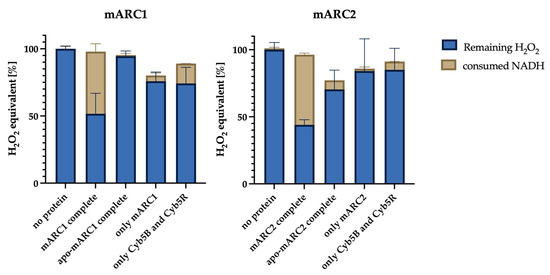
Figure 1
Open AccessArticle
Study on Extraction and Purification of Acanthopanax senticosus Polyphenols by an Ionic Liquid-Assisted Aqueous Two-Phase System
Molecules 2023, 28(17), 6383; https://doi.org/10.3390/molecules28176383 (registering DOI) - 31 Aug 2023
Abstract
►▼
Show Figures
This study aimed to extract and purify polyphenols from Acanthopanax senticosus. A new green method was developed, in which ionic liquids (ILs) were used as aqueous two-phase (ATP) adjuvants to extract the polyphenols from A. senticosus. An ionic liquid-assisted aqueous two-phase
[...] Read more.
This study aimed to extract and purify polyphenols from Acanthopanax senticosus. A new green method was developed, in which ionic liquids (ILs) were used as aqueous two-phase (ATP) adjuvants to extract the polyphenols from A. senticosus. An ionic liquid-assisted aqueous two-phase system (IL-ATPS) was established. The purification of the polyphenols from the extraction fluid by AB-8 macroporous resin was conducted, and the kinetic mechanisms were studied. The reuse of ionic liquids was executed. The results showed that an [OMIM]Br-assisted ethanol/NaH2PO4 system (IL-ATPS) was the best extraction solvent. In this study, the following optimal extraction conditions were determined: 32 wt.% ethanol, 25 wt.% NaH2PO4, 9 wt.% additional ionic liquid, a solid–liquid ratio of 1:40 g/mL, an extraction temperature of 50 °C, a pH of 4.0, an extraction time of 50 min, and an extraction rate of the polyphenols at 15.90 mg/g. The optimum adsorption parameters of the macroporous resin AB-8 were as follows: a flow rate of 3.5 BV·h−1, a sample volume of 40 mL, an elution flow rate of 3.5 BV·h−1, an eluent volume of 80 mL, and an eluant that was constituted by an 85% volume fraction of ethanol. The decolorization effect of 4% activated carbon was better than the other amounts; in addition, a decolorization rate of 76.81% and an ionic liquid recovery rate of 81.12% were found to be the most optimal. Compared with the traditional extraction methods, IL-ATPS has the advantages of requiring simple operation, saving time, and high efficiency. In addition, it can be used for the extraction of the polyphenolic compounds.
Full article
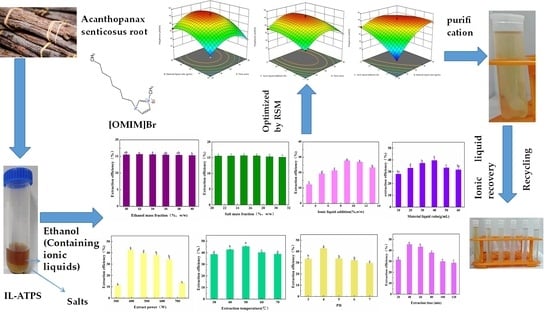
Graphical abstract
Open AccessArticle
Using UPLC-LTQ-Orbitrap-MS and HPLC-CAD to Identify Impurities in Cycloastragenol, Which Is a Pre-Clinical Candidate for COPD
by
, , , , , , , , , , and
Molecules 2023, 28(17), 6382; https://doi.org/10.3390/molecules28176382 (registering DOI) - 31 Aug 2023
Abstract
►▼
Show Figures
Chronic obstructive pulmonary disease (COPD) is a highly prevalent disease that has become the third leading cause of death worldwide. Cycloastragenol (CAG), which is the genuine sapogenin of the main active triterpene saponins in Astragali radix, is a bioavailable pre-clinical candidate for
[...] Read more.
Chronic obstructive pulmonary disease (COPD) is a highly prevalent disease that has become the third leading cause of death worldwide. Cycloastragenol (CAG), which is the genuine sapogenin of the main active triterpene saponins in Astragali radix, is a bioavailable pre-clinical candidate for chronic obstructive pulmonary disease (COPD), and it was investigated in our previous study. In order to progress medical research, it was first efficiently produced on a 2.5-kg scale via Smith degradation from astragaloside IV (AS-IV). Simultaneously, since the impurity profiling of a drug is critical for performing CMC documentation in pre-clinical development, a study on impurities was carried out. As these structures do not contain chromophores and possess weak UV absorption characteristics, HPLC-CAD and UPLC-LTQ-Orbitrap-MS were employed to carry out the quality control of the impurities. Then, column chromatography (CC), preparative thin-layer chromatography (PTLC), and crystallization led to the identification of 15 impurities from CAG API. Among these impurities, compounds 1, 4, 9, 10, 14, and 15 were elucidated via spectroscopic analysis, and 2–3, 5–8, and 11–13 were putatively identified. Interestingly, the new compounds 9 and 14 were rare 10, 19-secocycloartane triterpenoids that displayed certain anti-inflammatory activities against LPS-induced lymphocyte cells and CSE-induced MLE-12 cells. Additionally, a plausible structural transformation pathway of the degradation compounds from CAG or AS IV was proposed. The information obtained will provide a material basis to carry out the quality control and clinical safety assurance of API and related prescriptions. Reasonable guidance will also be provided regarding the compounds with weak UV absorption characteristics.
Full article
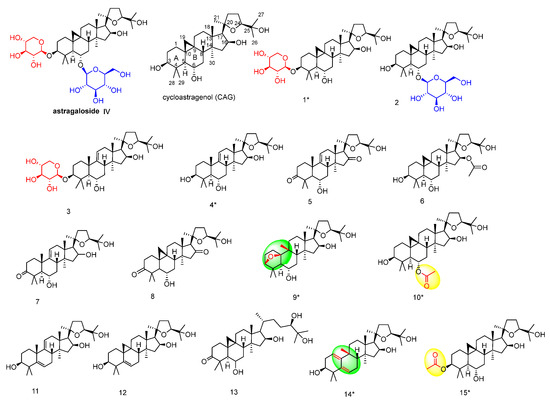
Figure 1
Open AccessArticle
Antimicrobial Coatings for Medical Textiles via Reactive Organo-Selenium Compounds
by
, , , , , , and
Molecules 2023, 28(17), 6381; https://doi.org/10.3390/molecules28176381 (registering DOI) - 31 Aug 2023
Abstract
Bleached and cationized cotton fabrics were chemically modified with reactive organoselenium compounds through the nucleophilic aromatic substitution (SNAr) reaction, which allowed for organo-selenium attachment onto the surface of cotton fabrics via covalent bonds and, in the case of the cationized cotton
[...] Read more.
Bleached and cationized cotton fabrics were chemically modified with reactive organoselenium compounds through the nucleophilic aromatic substitution (SNAr) reaction, which allowed for organo-selenium attachment onto the surface of cotton fabrics via covalent bonds and, in the case of the cationized cotton fabric, additional ionic interactions. The resulting textiles exhibited potent bactericidal activity against S. aureus (99.99% reduction), although only moderate activity was observed against E. coli. Fabrics treated with reactive organo-selenium compounds also exhibited fungicidal activities against C. albicans, and much higher antifungal activity was observed when organo-selenium compounds were applied to the cationized cotton in comparison to the bleached cotton. The treatment was found to be durable against rigorous washing conditions (non-ionic detergent/100 °C). This paper is the first report on a novel approach integrating the reaction of cotton fabrics with an organo-selenium antimicrobial agent. This approach is attractive because it provides a method for imparting antimicrobial properties to cotton fabrics which does not disrupt the traditional production processes of a textile mill.
Full article
(This article belongs to the Special Issue Recent Insights into Biopolymer Processing, from Preparation to Fundamental Properties and Industrial Applications)
►▼
Show Figures
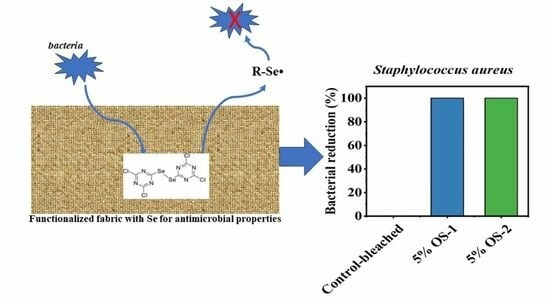
Graphical abstract
Open AccessArticle
Unprecedented Neoverrucosane and Cyathane Diterpenoids with Anti-Neuroinflammatory Activity from Cultures of the Culinary-Medicinal Mushroom Hericium erinaceus
by
, , , , , , and
Molecules 2023, 28(17), 6380; https://doi.org/10.3390/molecules28176380 - 31 Aug 2023
Abstract
The culinary medicinal mushroom Hericium erinaceus holds significant global esteem and has garnered heightened interest within increasingly ageing societies due to its pronounced neuroprotective and anti-neuroinflammatory properties. Within this study, two novel diterpenes, 16-carboxy-13-epi-neoverrucosane (1) and Erinacine L (
[...] Read more.
The culinary medicinal mushroom Hericium erinaceus holds significant global esteem and has garnered heightened interest within increasingly ageing societies due to its pronounced neuroprotective and anti-neuroinflammatory properties. Within this study, two novel diterpenes, 16-carboxy-13-epi-neoverrucosane (1) and Erinacine L (2); three known xylosyl cyathane diterpenoids, Erinacine A (3), Erinacine C (4), and Erinacine F (5); and four lanostane-type triterpenoids, and three cyclic dipeptides (10–12), in addition to orcinol (13), were isolated from the rice-based cultivation medium of H. erinaceus. Their structures were determined by NMR, HR-ESI-MS, ECD, and calculated NMR. Compound 1 marks a pioneering discovery as the first verrucosane diterpene originating from basidiomycetes, amplifying the scope of fungal natural product chemistry, and the intricate stereochemistry of Compound 5 has been comprehensively assessed for the first time. Compounds 2–5 not only showed encouraging neurotrophic activity in rat adrenal pheochromocytoma PC-12 cells, but also significantly inhibited lipopolysaccharide (LPS)-induced nitric oxide (NO) production in BV2 microglia cell cultures with IC50 values as low as 5.82 ± 0.18 μM. To elucidate the mechanistic underpinnings of these bioactivities, molecular docking simulation was used to analyze and support the interaction of 1 and 2 with inducible NO synthase (iNOS), respectively. In particular, compound 2, a cyathane-xyloside containing an unconventional hemiacetal moiety, is a compelling candidate for the prevention of neurodegenerative diseases. In summation, this investigation contributes substantively to the panorama of fungal diterpene structural diversity, concurrently furnishing additional empirical substantiation for the role of cyathane diterpenes in the amelioration of neurodegenerative afflictions.
Full article
(This article belongs to the Special Issue Structural Analysis and Biological Evaluation of Compounds from Fungi)
►▼
Show Figures

Figure 1
Open AccessArticle
In Silico Modeling and Structural Analysis of Soluble Epoxide Hydrolase Inhibitors for Enhanced Therapeutic Design
by
, , , , , and
Molecules 2023, 28(17), 6379; https://doi.org/10.3390/molecules28176379 - 31 Aug 2023
Abstract
Human soluble epoxide hydrolase (sEH), a dual-functioning homodimeric enzyme with hydrolase and phosphatase activities, is known for its pivotal role in the hydrolysis of epoxyeicosatrienoic acids. Inhibitors targeting sEH have shown promising potential in the treatment of various life-threatening diseases. In this study,
[...] Read more.
Human soluble epoxide hydrolase (sEH), a dual-functioning homodimeric enzyme with hydrolase and phosphatase activities, is known for its pivotal role in the hydrolysis of epoxyeicosatrienoic acids. Inhibitors targeting sEH have shown promising potential in the treatment of various life-threatening diseases. In this study, we employed a range of in silico modeling approaches to investigate a diverse dataset of structurally distinct sEH inhibitors. Our primary aim was to develop predictive and validated models while gaining insights into the structural requirements necessary for achieving higher inhibitory potential. To accomplish this, we initially calculated molecular descriptors using nine different descriptor-calculating tools, coupled with stochastic and non-stochastic feature selection strategies, to identify the most statistically significant linear 2D-QSAR model. The resulting model highlighted the critical roles played by topological characteristics, 2D pharmacophore features, and specific physicochemical properties in enhancing inhibitory potential. In addition to conventional 2D-QSAR modeling, we implemented the Transformer-CNN methodology to develop QSAR models, enabling us to obtain structural interpretations based on the Layer-wise Relevance Propagation (LRP) algorithm. Moreover, a comprehensive 3D-QSAR analysis provided additional insights into the structural requirements of these compounds as potent sEH inhibitors. To validate the findings from the QSAR modeling studies, we performed molecular dynamics (MD) simulations using selected compounds from the dataset. The simulation results offered crucial insights into receptor–ligand interactions, supporting the predictions obtained from the QSAR models. Collectively, our work serves as an essential guideline for the rational design of novel sEH inhibitors with enhanced therapeutic potential. Importantly, all the in silico studies were performed using open-access tools to ensure reproducibility and accessibility.
Full article
(This article belongs to the Special Issue In Silico Methods Applied in Drug and Pesticide Discovery)
►▼
Show Figures
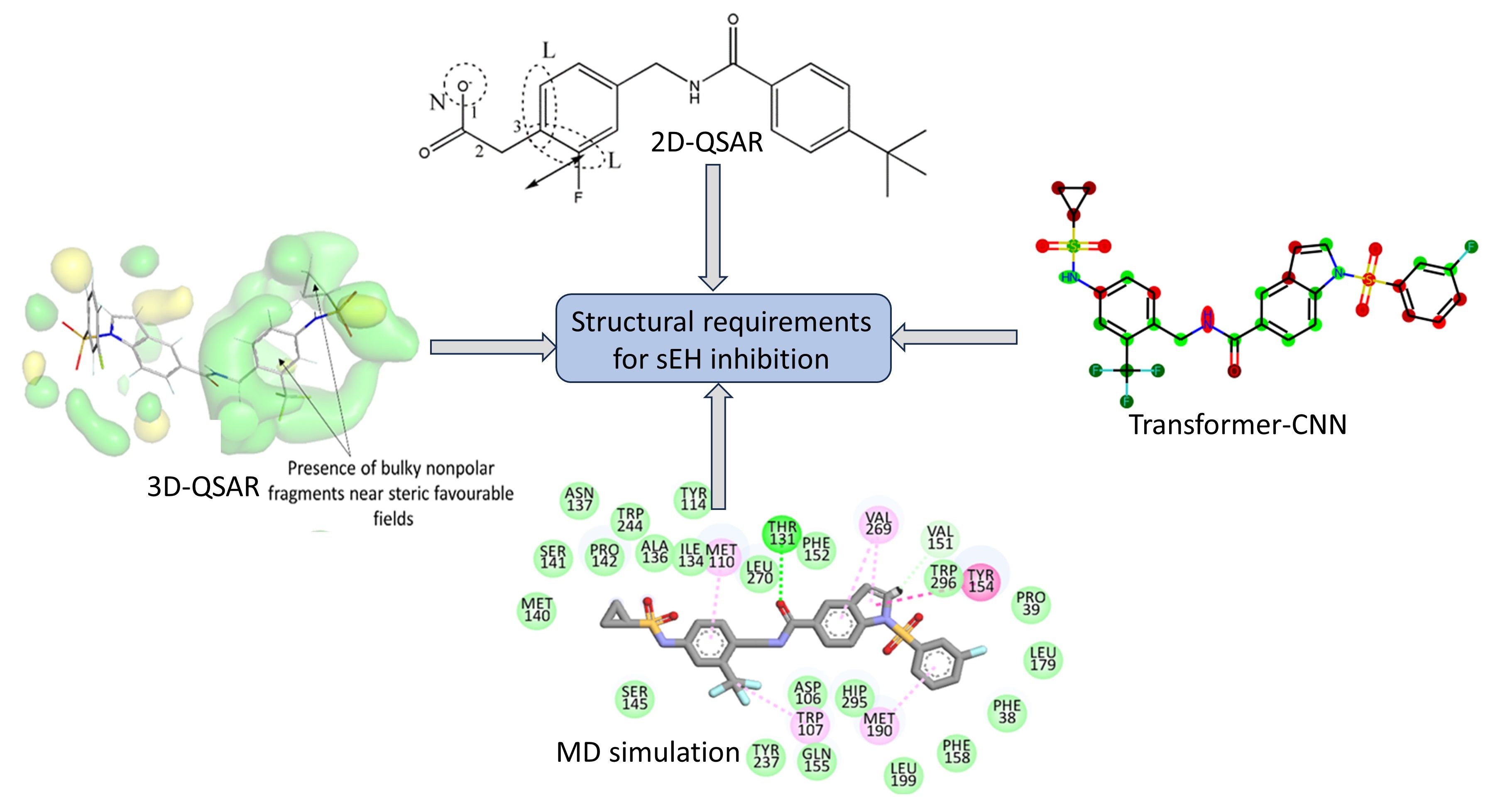
Graphical abstract
Open AccessArticle
RP-HPLC-Based Flavonoid Profiling Accompanied with Multivariate Analysis: An Efficient Approach for Quality Assessment of Houttuynia cordata Thunb Leaves and Their Commercial Products
by
, , , , , and
Molecules 2023, 28(17), 6378; https://doi.org/10.3390/molecules28176378 - 31 Aug 2023
Abstract
Chemical profiling for quality monitoring and evaluation of medicinal plants is gaining attention. This study aims to develop an HPLC method followed by multivariate analysis to obtain HPLC profiles of five specific flavonoids, including rutin (1), hyperin (2), isoquercitrin (3), quercitrin (4), and
[...] Read more.
Chemical profiling for quality monitoring and evaluation of medicinal plants is gaining attention. This study aims to develop an HPLC method followed by multivariate analysis to obtain HPLC profiles of five specific flavonoids, including rutin (1), hyperin (2), isoquercitrin (3), quercitrin (4), and quercetin (5) from Houttuynia cordata leaves and powder products and assess the quality of H. cordata samples. Eventually, we successfully established HPLC-based flavonoid profiles and quantified the contents of 32 H. cordata fresh leave samples and four powder products. The study also quantified the contents of those five essential flavonoids using an optimized RP-HPLC method. Peak areas of samples were then investigated with principal component analysis (PCA) and hierarchical cluster analysis (HCA) to evaluate the similarity and variance. Principal components in PCA strongly influenced by hyperin and quercetin showed that the samples were clustered into subgroups, demonstrating H. cordata samples’ quality. The results of HCA showed the similarity and divided the samples into seven subgroups. In conclusion, we have successfully developed a practical methodology that combined the HPLC-based flavonoid profiling and multivariate analysis for the quantification and quality control of H. cordata samples from fresh leaves and powder products. For further studies, we will consider various environmental factors, including climate and soil factors, to investigate their effects on the flavonoid contents of H. cordata.
Full article
(This article belongs to the Special Issue Extraction, Identification, and Biological Evaluations of Bioactive Compounds from Medicinal Plants)
►▼
Show Figures
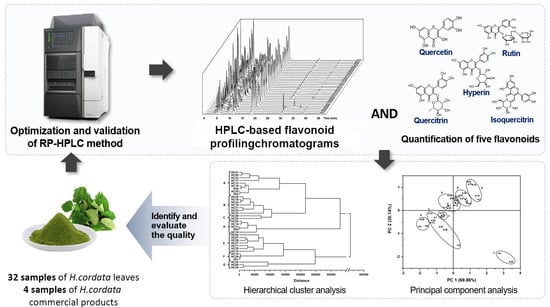
Graphical abstract
Open AccessReview
Biomass-Derived Flexible Carbon Architectures as Self-Supporting Electrodes for Energy Storage
Molecules 2023, 28(17), 6377; https://doi.org/10.3390/molecules28176377 - 31 Aug 2023
Abstract
With the swift advancement of the wearable electronic devices industry, the energy storage components of these devices must possess the capability to maintain stable mechanical and chemical properties after undergoing multiple bending or tensile deformations. This circumstance has expedited research efforts toward novel
[...] Read more.
With the swift advancement of the wearable electronic devices industry, the energy storage components of these devices must possess the capability to maintain stable mechanical and chemical properties after undergoing multiple bending or tensile deformations. This circumstance has expedited research efforts toward novel electrode materials for flexible energy storage devices. Nonetheless, among the numerous materials investigated to date, the incorporation of metal current collectors or insulative adhesives remains requisite, which entails additional costs, unnecessary weight, and high contact resistance. At present, biomass-derived flexible architectures stand out as a promising choice in electrochemical energy device applications. Flexible self-supporting properties impart a heightened mechanical performance, obviating the need for additional binders and lowering the contact resistance. Renewable, earth-abundant biomass endows these materials with cost-effectiveness, diversity, and modulable chemical properties. To fully exploit the application potential in biomass-derived flexible carbon architectures, understanding the latest advancements and the comprehensive foundation behind their synthesis assumes significance. This review delves into the comprehensive analysis of biomass feedstocks and methods employed in the synthesis of flexible self-supporting carbon electrodes. Subsequently, the advancements in their application in energy storage devices are elucidated. Finally, an outlook on the potential of flexible carbon architectures and the challenges they face is provided.
Full article
(This article belongs to the Special Issue Nanomaterials for Energy Storage and Conversion)
►▼
Show Figures
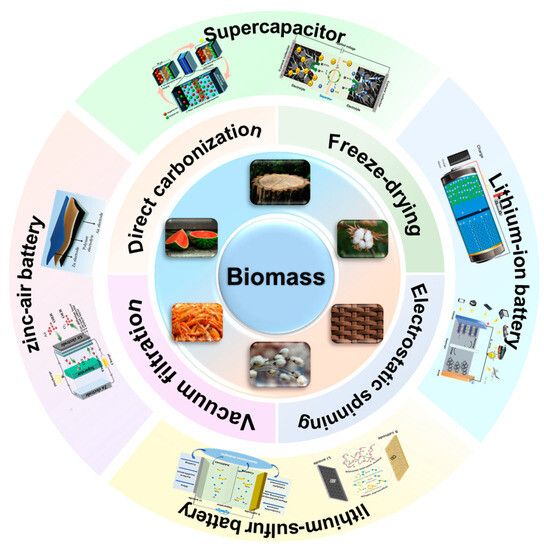
Figure 1
Open AccessArticle
Methanation of CO2 over Ruthenium Supported on Alkali-Modified Silicalite-1 Catalysts
Molecules 2023, 28(17), 6376; https://doi.org/10.3390/molecules28176376 - 31 Aug 2023
Abstract
This study focuses on the catalytic properties of ruthenium catalysts supported on modified silicalite-1 (with an MFI structure). By post-synthesis modification of silicalite-1 with solutions of alkali metal compound, a novel and cost-effective method was discovered to create basic centers on the surface
[...] Read more.
This study focuses on the catalytic properties of ruthenium catalysts supported on modified silicalite-1 (with an MFI structure). By post-synthesis modification of silicalite-1 with solutions of alkali metal compound, a novel and cost-effective method was discovered to create basic centers on the surface of silicalite-1 supports. The modification not only affected the basicity of the supports but also their porosity. The influence of the type of alkali solution (KOH or NaOH) and its concentration (0.1 M or 1.0 M) on both the basicity and porosity was investigated. The modified silicalite-1 materials were employed as supports for ruthenium catalysts (1 wt.% Ru) and evaluated for their CO2 methanation activity. The results were compared with the hydrogenation performance of ruthenium catalysts supported on unmodified silicalite-1. Characterization of the supports and catalysts was conducted using techniques such as BET, XRD, FT-IR, ICP-OES, TPR-H2, H2 chemisorption, TPD-CO2, SEM, and TEM. Remarkably, the catalytic activity of ruthenium supported on silicalite-1 treated with 1.0 M NaOH (exhibiting selectivity toward methane above 90% in a reaction temperature range of 250–450 °C) outperformed both unmodified and KOH-modified silicalite-1 supported Ru catalysts.
Full article
(This article belongs to the Special Issue Research on Heterogeneous Catalysis)
►▼
Show Figures
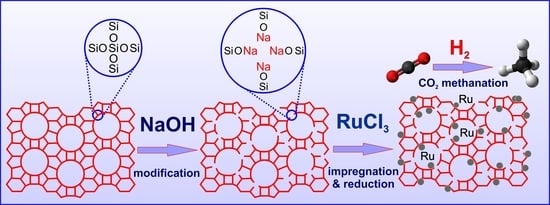
Graphical abstract
Open AccessReview
Ligand-Free Signaling of G-Protein-Coupled Receptors: Physiology, Pharmacology, and Genetics
Molecules 2023, 28(17), 6375; https://doi.org/10.3390/molecules28176375 - 31 Aug 2023
Abstract
G-protein-coupled receptors (GPCRs) are ubiquitous sensors and regulators of cellular functions. Each GPCR exists in complex aggregates with multiple resting and active conformations. Designed to detect weak stimuli, GPCRs can also activate spontaneously, resulting in basal ligand-free signaling. Agonists trigger a cascade of
[...] Read more.
G-protein-coupled receptors (GPCRs) are ubiquitous sensors and regulators of cellular functions. Each GPCR exists in complex aggregates with multiple resting and active conformations. Designed to detect weak stimuli, GPCRs can also activate spontaneously, resulting in basal ligand-free signaling. Agonists trigger a cascade of events leading to an activated agonist-receptor G-protein complex with high agonist affinity. However, the ensuing signaling process can further remodel the receptor complex to reduce agonist affinity, causing rapid ligand dissociation. The acutely activated ligand-free receptor can continue signaling, as proposed for rhodopsin and μ opioid receptors, resulting in robust receptor activation at low agonist occupancy with enhanced agonist potency. Continued receptor stimulation can further modify the receptor complex, regulating sustained ligand-free signaling—proposed to play a role in opioid dependence. Basal, acutely agonist-triggered, and sustained elevated ligand-free signaling could each have distinct functions, reflecting multi-state conformations of GPCRs. This review addresses basal and stimulus-activated ligand-free signaling, its regulation, genetic factors, and pharmacological implications, focusing on opioid and serotonin receptors, and the growth hormone secretagogue receptor (GHSR). The hypothesis is proposed that ligand-free signaling of 5-HT2A receptors mediate therapeutic effects of psychedelic drugs. Research avenues are suggested to close the gaps in our knowledge of ligand-free GPCR signaling.
Full article
(This article belongs to the Section Medicinal Chemistry)
►▼
Show Figures
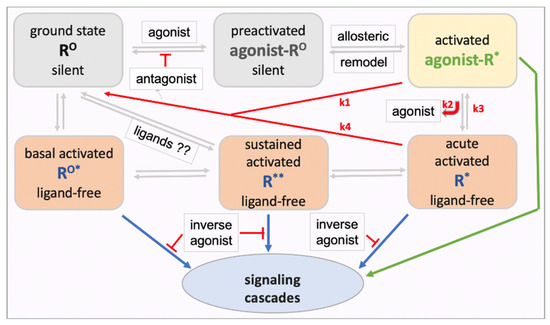
Figure 1
Open AccessArticle
Synthesis of Spirocyclopropane-Containing 4H-Pyrazolo[1,5-a]indoles via Alkylative Dearomatization and Intramolecular N-Imination of an Indole–O-(Methylsulfonyl)oxime
Molecules 2023, 28(17), 6374; https://doi.org/10.3390/molecules28176374 - 31 Aug 2023
Abstract
In this paper, we report the synthesis of spirocyclopropane-containing 4H-pyrazolo[1,5-a]indoles 6a–e via alkylative dearomatization and intramolecular N-imination of indole–O-(methylsulfonyl)oxime 11. Starting materials tryptophol (7) and 2-bromocyclopetanone (8) were reacted
[...] Read more.
In this paper, we report the synthesis of spirocyclopropane-containing 4H-pyrazolo[1,5-a]indoles 6a–e via alkylative dearomatization and intramolecular N-imination of indole–O-(methylsulfonyl)oxime 11. Starting materials tryptophol (7) and 2-bromocyclopetanone (8) were reacted in the presence of HBF4·OEt2, providing 1,2,3,5,6,11-hexahydrocyclopenta[2,3]oxepino[4,5-b]indole (9) in a 63% yield. Compound 9 was reacted with hydroxylamine hydrochloride to afford oxime 10 (65% yield), which was subsequently bis-methanesulfonated to form 11 in a 85% yield. Heating 11 with various alcohols in the presence of N,N-diisopropylethylamine (DIPEA) triggered the alkylative dearomatization and intramolecular N-imination, forming the spirocyclopropane and 4H-pyrazolo[1,5-a]indole structures in the targets 6a–e with 67–84% yields.
Full article
(This article belongs to the Special Issue Feature Papers in Organic Chemistry (Volume II))
►▼
Show Figures

Graphical abstract
Open AccessReview
Engineered Biomaterials Trigger Remineralization and Antimicrobial Effects for Dental Caries Restoration
by
, , , , , , and
Molecules 2023, 28(17), 6373; https://doi.org/10.3390/molecules28176373 - 31 Aug 2023
Abstract
Dental caries is the most prevalent chronic disease globally, significantly impacting individuals’ quality of life. A key reason behind the failure of implanted restorations is their biological inactivity, meaning they are unable to form crosslinks with the surrounding tooth structures, thus making patients
[...] Read more.
Dental caries is the most prevalent chronic disease globally, significantly impacting individuals’ quality of life. A key reason behind the failure of implanted restorations is their biological inactivity, meaning they are unable to form crosslinks with the surrounding tooth structures, thus making patients susceptible to implant loss and recurrent tooth decay. For the treatment of caries, antibacterial medicine and remineralization are effective means of treating the recurrence of caries. Owing to the rapid progression in the biomaterials field, several biomaterials have been reported to display antimicrobial properties and aid in dentin remineralization. Bioactive materials hold considerable potential in diminishing biofilm accumulation, inhibiting the process of demineralization, enabling dentin remineralization, and combating bacteria related to caries. Bioactive materials, such as fluoride, amorphous calcium phosphate, bioactive glass, collagen, and resin-based materials, have demonstrated their effectiveness in promoting dentin remineralization and exerting antibacterial effects on dental caries. However, the concentration of fluoride needs to be strictly controlled. Although amorphous calcium phosphate can provide the necessary calcium and phosphorus ions for remineralization, it falls short in delivering the mechanical strength required for oral mastication. Resin-based materials also offer different advantages due to the complexity of their design. In this review, we delve into the application of advanced bioactive materials for enhancing dentin remineralization and antibacterial properties. We eagerly anticipate future developments in bioactive materials for the treatment of dental caries.
Full article
(This article belongs to the Topic Antimicrobial Agents and Nanomaterials)
►▼
Show Figures
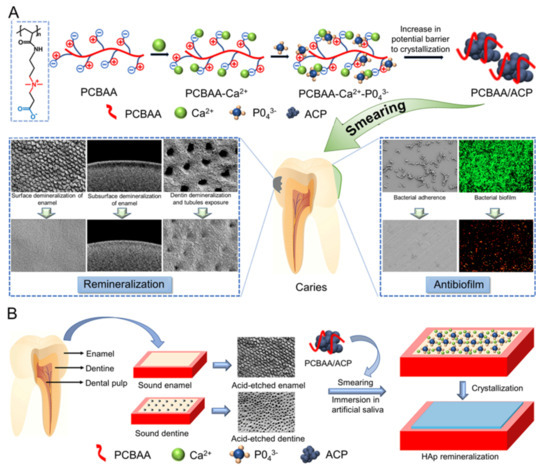
Figure 1

Journal Menu
► ▼ Journal Menu-
- Molecules Home
- Aims & Scope
- Editorial Board
- Reviewer Board
- Topical Advisory Panel
- Instructions for Authors
- Special Issues
- Topics
- Sections & Collections
- Article Processing Charge
- Indexing & Archiving
- Editor’s Choice Articles
- Most Cited & Viewed
- Journal Statistics
- Journal History
- Journal Awards
- Society Collaborations
- Conferences
- Editorial Office
Journal Browser
► ▼ Journal Browser-
arrow_forward_ios
Forthcoming issue
arrow_forward_ios Current issue - Vol. 28 (2023)
- Vol. 27 (2022)
- Vol. 26 (2021)
- Vol. 25 (2020)
- Vol. 24 (2019)
- Vol. 23 (2018)
- Vol. 22 (2017)
- Vol. 21 (2016)
- Vol. 20 (2015)
- Vol. 19 (2014)
- Vol. 18 (2013)
- Vol. 17 (2012)
- Vol. 16 (2011)
- Vol. 15 (2010)
- Vol. 14 (2009)
- Vol. 13 (2008)
- Vol. 12 (2007)
- Vol. 11 (2006)
- Vol. 10 (2005)
- Vol. 9 (2004)
- Vol. 8 (2003)
- Vol. 7 (2002)
- Vol. 6 (2001)
- Vol. 5 (2000)
- Vol. 4 (1999)
- Vol. 3 (1998)
- Vol. 2 (1997)
- Volumes not published by MDPI
Highly Accessed Articles
Latest Books
E-Mail Alert
News
Topics
Topic in
Applied Sciences, AppliedChem, Foods, MPs, Molecules
Future Food Analysis and Detection - 2nd Volume
Topic Editors: Alessandra Biancolillo, Federico MariniDeadline: 30 September 2023
Topic in
Energies, Membranes, Molecules, Separations, Water
Sustainable Water Purification Technologies for Multiple Applications
Topic Editors: Marco Pellegrini, Cesare Saccani, Alessandro GuzziniDeadline: 15 October 2023
Topic in
Catalysts, Energies, Hydrogen, Molecules, Nanomaterials
Hydrogen Generation, Storage, and Utilization
Topic Editors: In-Hwan Lee, Duy Thanh Tran, Vandung DaoDeadline: 31 October 2023
Topic in
Antioxidants, Biomolecules, Molecules, Pharmaceutics, Separations
Application of Analytical Chemistry in Exercise Physiology and Pharmacology
Topic Editors: Andrzej Pokrywka, Dorota KwiatkowskaDeadline: 15 November 2023

Conferences
Special Issues
Special Issue in
Molecules
Nutraceuticals in Nanomedicine Applications
Guest Editors: Tamer Elbayoumi, Imran Saleem, Satyanarayana SomavarapuDeadline: 1 September 2023
Special Issue in
Molecules
Biochemical Role of Pigments in the Plant Life
Guest Editors: Valentine P. Ananikov, Kirill GolokhvastDeadline: 15 September 2023
Special Issue in
Molecules
Cannabinergic Ligands: Chemistry, Pharmacology and Therapeutic Potential
Guest Editor: Spyros P. NikasDeadline: 30 September 2023
Special Issue in
Molecules
Synthesis and Screening of Some Novel Thiazole, Bithiazole and Thiazolidin-4-one Compounds with Biological Activity
Guest Editors: Brindusa Tiperciuc, Cristina Nastasă, Ioana IonuțDeadline: 15 October 2023
Topical Collections
Topical Collection in
Molecules
Bioactive Compounds
Collection Editors: Roberto Fabiani, Eliana Pereira, Isabel C.F.R. Ferreira, Nancy D. Turner
Topical Collection in
Molecules
Natural Products as Leads or Drugs against Neglected Tropical Diseases
Collection Editors: Thomas J. Schmidt, Valeria Sülsen, Josphat Matasyoh
Topical Collection in
Molecules
Efficient Pharmaceutical and Chemical Approaches for Anticancer Therapy: Design, Preliminary Evaluations, and Further Developments
Collection Editors: Helen Osborn, Mohammad Najlah, Jean Jacques Vanden Eynde, Annie Mayence
Topical Collection in
Molecules
Neuroprotection Mediated by Natural Products and Their Chemical Derivatives
Collection Editor: Lucian Hritcu




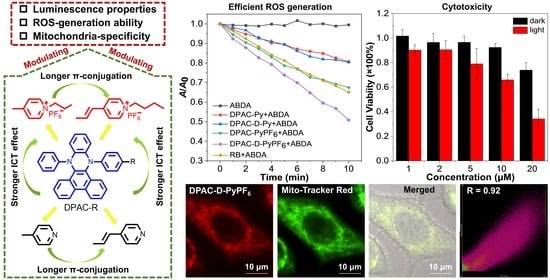
.png)
.jpg)




